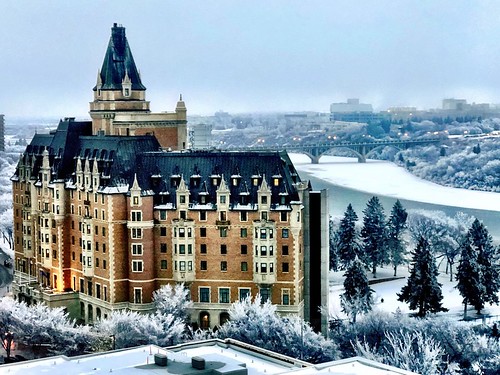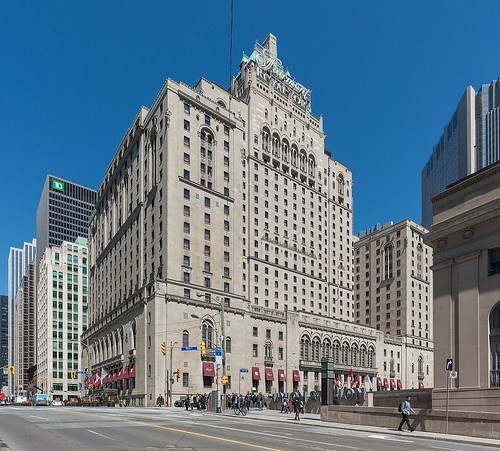Hey. Me again. I’m here. Because I’m here because I’m here because I’m here. I made it back from Abu Dhabi without incident and had a very relaxing 14 days of quarantine in another Airbnb. That makes 56 days in quarantine so far for this pandemic, with at least another ten to come when I eventually make it back to the boat. The virus is worse than it’s ever been here in Saskatchewan, but it’s at least twice as bad in the UK, and there's no pressing need for me to travel to be back there any time soon so... I’m here.
Christmas was a very small, very local event with intermittent FaceTime gift-opening and not much else. New Year’s was a non-event. January was unseasonably pleasant for a while, which made running on the prairie grid roads quite nice. Now it’s turned properly, truly cold, and even a short run is a serious undertaking.
Then again, the extreme cold weather does make for some pretty scenery, what with the hoarfrost and the piercing blue skies and all.
Astute Go Stay Work Play Live Readers will have noticed a distinct lack of blogging, largely because there’s really nothing to say. This will come as a surprise to no one, but nothing new happens, and I’m just marking time. That said, there is a lingering guilt about not blogging, and it’s not like I’m struggling to fit everything in each day, so in a nod to the GSWPL tag “landmarks”, I’ve decided to have a look at a few hometown sites that might be vaguely interesting, and toss in a bit of Canadian history to bulk things up. (Homeschooling parents are welcome to use the blog for a small fee.) We’ll start with what’s probably Saskatoon’s most iconic landmark: the Bessborough Hotel. (Pronounced "BEZ-ber-oh”, but most often known locally simply as "The Bess”, to rhyme with fez.)

Not bad, eh? (Thank you to the Delta Hotel Bessborough website for this photo. The GSWPL aerial photo crane gets cranky in temps below -30.)
The 10-storey hotel was completed on its verdant riverside location in 1935, and was the tallest building in the city until 1966. It was then surpassed by Marquis Towers, an utterly unremarkable apartment building a few blocks away. (And as long as we’re pronouncing things correctly, in Saskatoon “marquis” is “MAR-kwiss”, not “Mar-KEE”. Much in the same way that Portage Avenue in Winnipeg is “POR-duj", not “por-TAZH”. And don’t even get me started on Mozart, Saskatchewan.) The Bess was named for the 9th Earl of Bessborough, the fancifully named Vere Brabazon Ponsonby, who was Governor General of Canada at the time of the hotel’s construction.
The Bessbrough may seem outlandishly grand for a small prairie city, but it’s actually the local variant of the famed Grand Railway Hotels which were built across the country in the late 19th and early 20th centuries. Canadian Railway Hotels are, with a few exceptions, utterly excellent. Canada may not be blessed with pyramids or Roman ruins or castles, but we do have the railway hotels.
The first railway to cross Canada was the Canadian Pacific, completed in November of 1885 with the driving of the “Last Spike” at Craigellachie, near the Eagle Pass in British Columbia. Though the construction of the trans Canada railway was driven by commercial interests, its completion is often regarded as the event that knit the country together both physically and symbolically.

The iconic image of CPR Director Donald Smith, hammering the last spike. (Great beard, Don, though Mr. Top Hat behind you is no slouch either.)
In fact Smith needed two attempts at the thing, because his first swing went off course and bent the first Last Spike. However, that bent one was actually the second Last Spike. (Try to stay with me here, this will get complicated). The first Last Spike was made of silver and commissioned by the then Governor General Lord Landsdowne. However, Landsdowne was called back to Ottawa on business before he could deliver the fancy spike, so Donald Smith was left to rustle up an ordinary iron spike for the ceremony. The bent (second) spike was given to Smith after the ceremony, who proceeded to have bits of it cut off and made into commemorative jewellery. What was left eventually made its way to the Canadian Science and Technology Museum in 1985. The silver first Last Spike is now at the Canadian Museum of History. The spike that Donald Smith actually drove - the third Last Spike - was extracted shortly after the ceremony to discourage souvenir hunters. It made its way back to the CPR offices in Montreal, where they managed to lose it sometime in the 1940s. The fourth Last Spike was the one that remained in place so that the rail would actually be attached to the tie. Comforting that in all the fuss they actually remembered to do that.
Having finally created this marvellous ribbon of steel, the railroad’s owners needed a way to get people to use it not merely for freight but for tourism. The railroad hotels were intended both to serve patrons of the railroad, and as an attraction in themselves. The president of the CPR at the time, William Cornelius Van Horne, famously said “If we can’t export the scenery, we’ll import the tourists”. The first great railroad hotel, the 1878 Hotel Windsor in Montreal, was not actually built by a railroad company, but it was located close to the Windsor Station and became the permanent headquarters of both the the Grand Trunk Railway and the Canadian Pacific Railway. (The Hotel Windsor is, therefore, where they managed to lose the third Last Spike. Has anyone looked in the basement? Just asking.)
The first hotel built by a railway company was the CPR’s Hotel Vancouver, opened in May of 1888, closely followed by the iconic Banff Springs Hotel, a mere two weeks later. (Though the familiar Banff Springs pictured below was actually built to replace the wooden 19th century original, which burned down in 1926.)

I don’t actually have a Bucket List per se, but if I did, staying at the Banff Springs Hotel would definitely be on it. In the Chocolate Room. With Harrison Ford, please. (Picture credit: By James Levy - Own work, CC BY-SA 3.0)
The best of the railway hotels are built in what came to be known as Chateuaesque architectural style. As its name implies, Chateauesque architecture is a style drawing on the French chateaux of the 15th to 17th centuries, though it also includes elements of the Scottish Baronial style. It’s characterised by heavy ornamentation, abundant towers and turrets, oriel windows, quoins (good Scrabble word, that), steeply pitched roofs with dormers and other assorted excellent touches like machicolations, all of which are amply employed in the Bessborough, an excellent example of the style. (As, incidentally, is Cinderella Castle in Disneyland.)
Though the Canadian Pacific Railway came first, Canada’s other main rail company, the Canadian National Railway (CNR, or often just CN) was formed in 1919 from the assets of several defunct rail companies. CN built up its own trans-national rail network and naturally built a small string of seven railway hotels to go along with it. The Bessborough is a CN hotel, as is the Hotel Vancouver. However, CP definitely holds then record with 22 railway hotels to its name, half of which are still in operation as hotels today. Among the great CP hotels is the Chateau Frontenac in Quebec City, Chateau Lake Louise, and the largest railway hotel in the country, the massive Royal York in downtown Toronto, which sits right across Front street from Union Station. With over a thousand rooms and standing at 28 storeys high, The Royal York was the briefly the tallest building in the British Empire when it was opened in 1929.

You can see that the Royal York isn’t as excellently Chateuesque as the grandest of the railway hotels. Many of those that were built in the 20s and 30s didn’t push the boat out quite so much.
That makes the Bessborough all the more remarkable, since it was built in that same period, and just up the road from the positively lumpish Hotel Saskatchewan in the provincial capital, Regina ("ruh-JIE-nuh", please). Indeed the construction of the Bess was spurred in part by the standard inter-city rivalry, so perhaps that’s why they decided to do things up right here in Saskatoon.

The Hotel Saskatchewan. Yaaaaaaaawn. Sadly, of all the fantastic grand railway hotels in all the land, this is the only one I’ve ever actually stayed in. I recall the rooms being exceedingly small. And that’s coming from someone who lives on a boat. (By Drm310 - Own work, CC BY-SA 3.0)
The last railway hotel to be built was the exceedingly ordinary Queen Elizabeth in Montreal, opened in 1958. A pale echo of the sprawling magnificence of examples like the Chateau Frontenac, the Queen Elizabeth marked a whimpering end to a glorious tradition. In 1988 CP bought out CN Hotels and now manages eleven railway hotels as Fairmont Hotels and Resorts. In total, 24 Grand Railway Hotels are still in operation across the country, including a smattering of Marriotts and Deltas, and a number of independently run operations. They’re a lovely reminder of the golden age of rail travel. Or, indeed, simply the age of travel.
Sigh.


